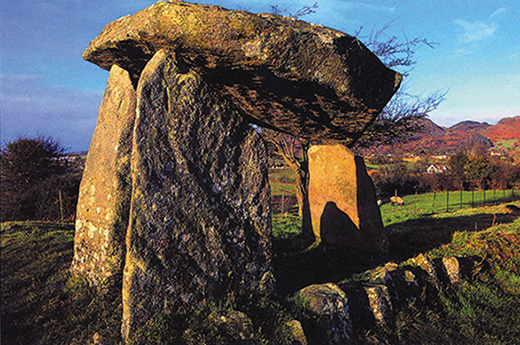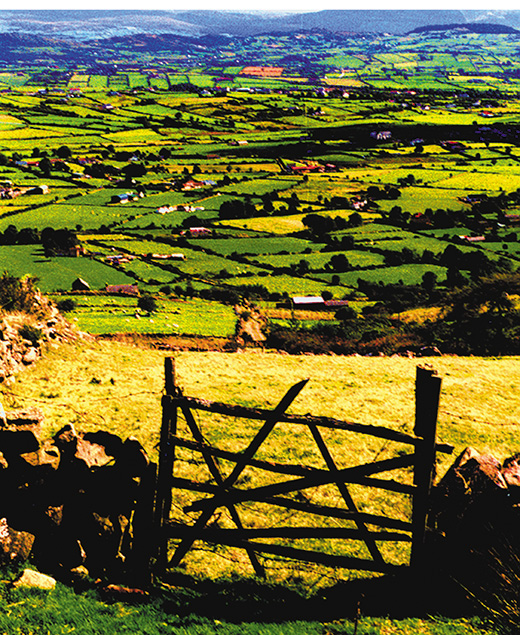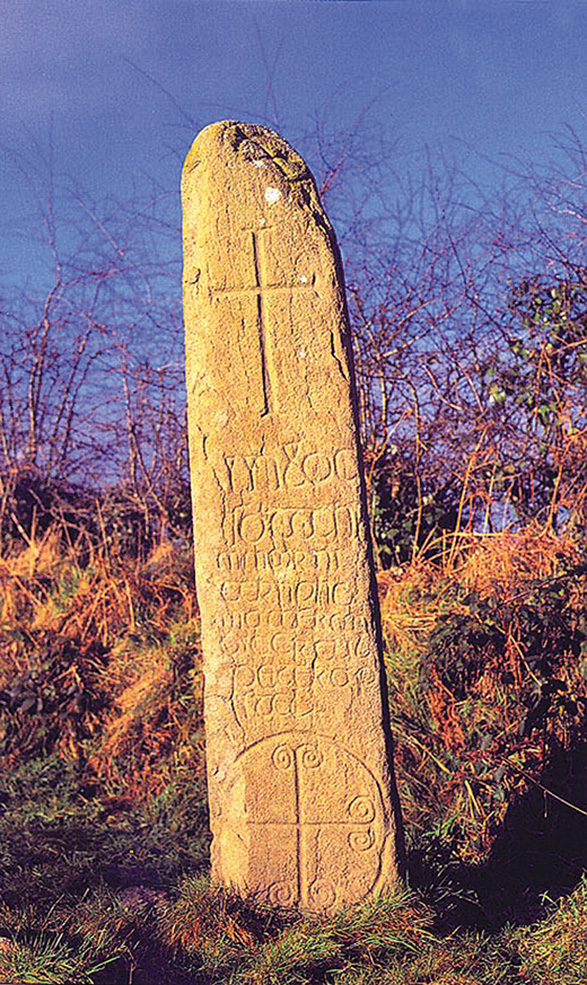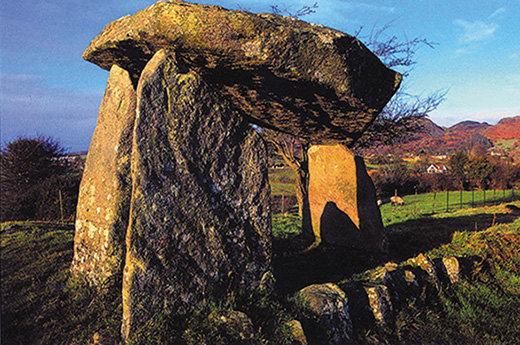A tourist haven? Tommy Makem thinks so and he held a festival there to prove it.
℘℘℘
June, 2000. A bus packed with American tourists pulls out of Newry and takes the road to South Armagh. On one side it passes a British army observation post, currently being dismantled. On the other, a large poster advertises the first Tommy Makem International Festival of Song, which is where the bus is heading. It’s a defining image. I.R.A. signs might still line the roads, British soldiers might still patrol them, but the South Armagh being celebrated at the festival is not the “bandit country” of the Troubles, but one of the richest seams of storytelling and music, song and poetry, myth and legend in all of Ireland.
According to a recent delegation of Observers from Canada, Europe, and the U.S., the militarization of South Armagh has had a negative effect on tourism. One observer, John Fogerty, of the Irish-American Unity Conference, went as far as saying, “[The militarized zones] preclude any tourism or building of an economy. There is not a single hotel in the entire area.”

Perhaps so. Certainly South Armagh will be a more attractive proposition when the military presence has gone, but why wait that long? The truth is that 30 years of Troubles has blinded outsiders to the virtues of one of the most beautiful and welcoming parts of the world. But how does one convince tourists brought up on TV reports of violence for a generation to take the plunge? If you’re famed Irish singer Tommy Makem, a native of South Armagh and now resident in the U.S., you hold a song fest. As Makem himself said of the festival, “This is the first real benefit of the peace process for South Armagh. We’ve had such a bad image, battered for so much of the last thirty years, yet the people here are steeped in culture and even in the most difficult times kept it alive and vibrant.”
As the bus headed for the Tí Chulainn center in Mullach Ban, base for the festival and indeed many of South Armagh’s cultural events, the sun was rising over Slieve Gullion, the mountain which dominates the local landscape and gave birth to so many Irish legends. Here on its slopes, a druidess secretly raised Deirdre of the Sorrows, banished after she had been predicted to destroy Ulster. Fionn MacCumhaill was bewitched by Miluchra on its summit at the Lough of Calliagh Bhirra (where it is rumored your hair will turn white if you bathe). Around its base, many battles took place in the cattle raid of Cooley, when Cúchulainn defended Ulster single-handedly against the forces of Queen Maeve of Connacht.

There is no better introduction to South Armagh than the beautiful forest drive around Slieve Gullion, with views of all the land that lies within the Ring of Gullion (a series of hills and mountains that surround Slieve Gullion) ending with a meal at the Slieve Gullion Courtyard, a lovely listed building near the mountain’s base which includes several self-catering apartments. In a rare moment of modesty, the poet W.B. Yeats confessed he had no words to describe Slieve Gullion’s beauty. For that you have to turn to Peter Makem, nephew of Tommy and chief instigator of the festival, whose books of poetry have placed him amongst Ireland’s best.
The festival kicked off at Tí Chulainn with a packed concert by Tommy Makem and the Sands Family. Simultaneously other music events were taking place around the area. Indeed, traditional music is alive and well throughout South Armagh, in pubs like the Welcome Inn in Forkhill where local musicians from eight to 80 gather every Tuesday night, in Lislea where the festival’s set dancing took place, Belleek, Cross-maglen, Keady, and Camlough.
The festival had an informal, personal atmosphere, which reflects the feel of South Armagh. Culture here isn’t to be found in opera halls or arts centers but in stories told in packed bars; dances in dance halls and social clubs; music, poetry, and song just about anywhere. Over the 10 days of the festival, visitors enjoyed storytelling by the likes of Len Graham and John Campbell, lectures in song and rhyme from local poets and musicians, a musical history of the area from the Armagh Rhymers and a commemoration to past musicians from both traditions in South Armagh.
The festival also included tours to all parts of South Armagh and to neighboring Cooley and the Mournes, all within a 30-minute drive of Slieve Gullion. And while the beauty of its mountains and valleys is South Armagh’s most beguiling feature, its villages and towns have much to offer too. Among them are Keady, whose heritage center has a display dedicated to Sarah Makem, Tommy’s mother and one of Ireland’s most important collectors of traditional songs; the model Quaker village of Bessbrook; and Cullyhanna, where an exhibition center celebrates the life of the remarkable Cardinal Ó Fiaich, born nearby.
The history of the area can be glimpsed at the various prehistoric remains around the Ring of Gullion, the ruined old Killeavy church (where what is thought to be a 1500-year-old nunnery has just been discovered) and at the graveyard – one of the most important in Ulster – at Creggan church. Here are buried three of several 18th-century poets, considered amongst the best in Europe at the time, who lived within eight miles of each other near Slieve Gullion and were a continuing part of the area’s reputation as the district of song and poetry, which began in medieval times and lasts to this day.

Throughout the year, the culture of South Armagh is kept alive by festivals, dances, walking tours, storytelling competitions, concerts, music and folklore schools, horse and hiring fairs, and much else besides. But can initiatives like the Tommy Makem festival convince outsiders to come and share this heritage? The festival, whose sponsors include the likes of Bob Dylan, Liam Neeson, and Seamus Heaney, is planned to be the first of many – Peter Makem hopes it will rival the great music festivals of Clare in future years – providing a greater level of sponsorship can be found.
Perhaps the answer can be found in the group from Poland who found themselves telling their own stories on the storytelling night or the Dutch visitors who opened the festival’s last night, singing traditional Irish songs. Or the visiting founder of the famous Milwaukee Irish Fest, who was so impressed that he decided to recommend that South Armagh be the focus of his next festival. The culture of South Armagh, like the landscape, has an infectious quality, and one can only hope that when the last army observation tower is dismantled and the last helicopter departed, tourists can finally be persuaded to judge South Armagh on its true merits. Roll on the next festival.
Next year’s Tommy Makem International Festival of Song will be held from June 20 to 23. ♦


Leave a Reply